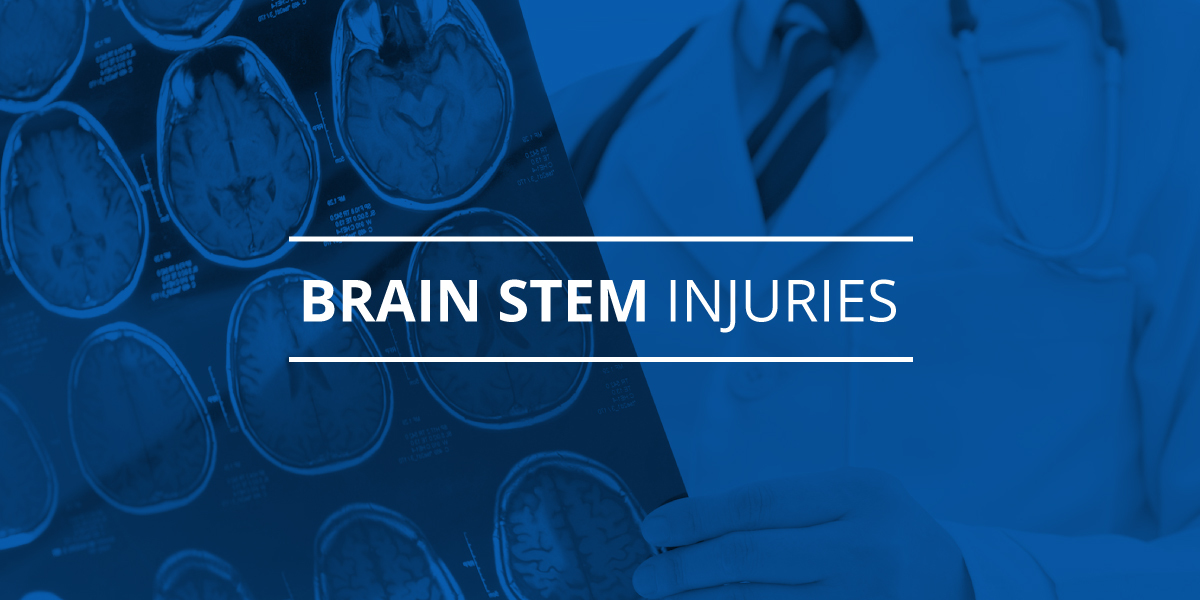Brain Stem Injuries

One of the huge challenges in representing survivors of brain injury is providing convincing evidence of the debilitating nature of the injury. This is even truer in cases where the brain injury doesn’t cause any obvious physical disability. It can be easy to miss the signs of brain injury if you don’t know what to look for.
A short story
For example, years ago I was approached by a young man who had been in a car – pedestrian collision. He had been thrown 15 feet after being hit and had broken his leg. He was represented by another lawyer who was recommending that he settle his claim for injuries from the broken leg and the young man wanted a second opinion about whether the settlement was a good deal.
After talking with him for about an hour it became apparent to me that he was showing signs of someone struggling with many of the symptoms of a brain injury. I recommended he see one of the medical experts that usually diagnose and treat my clients who have suffered a brain injury. After the assessment was done, the medical expert told me that the fellow had suffered a fairly significant traumatic brain injury in the accident.
We were able to get the insurance company to pay for proper treatment and rehabilitation for his brain injury and his claim eventually settled for more than ten times what his original lawyer had urged him to take for his “broken leg” claim.
You need to know what to look for
The point is, a person suffering from brain injury may appear to have no obvious physical injury. The signs and symptoms can be easy to miss, even for experienced lawyers.
But the challenges of living with a brain injury, or caring for an injured loved one, are multi-dimensional, affecting the physical, emotional, psychological and financial well-being of the injured person. Simple day-to-day activities such as walking, writing and eating may become difficult or impossible to undertake on one’s own. For this reason, brain injuries are often called “invisible injuries”.
Different types of brain injury
While any brain injury is serious and can have long term consequences certain types of brain injury may only result in minor or temporary symptoms, these are typically referred to as a mild traumatic brain injury.
On the other hand, the brain stem, located at the base of the brain, is the nerve-rich thoroughfare between the spinal cord and the brain. As the most primitive part of our brain, it regulates vital bodily functions, including our breath, heartbeat, reflexes and our fight or flight response. It is essentially the “traffic center” for our nervous system.
When injuries happen to this small and concentrated portion of our nervous system, they are often serious, requiring life-long treatment, and may even be life-threatening.
How do brain stem injuries occur?
Serious traumatic brain injuries typically arise from blows to the head. They are a leading cause of death and disability in Nova Scotia. Another situation where brain injury can happen is when the head rapidly accelerates or decelerates as a result of a blow or the sudden impact of a vehicle collision.
This type of sudden acceleration/deceleration trauma can cause tearing or shearing of the nerve connections (called axons) that are concentrated in the brain stem. Physicians refer to this type of traumatic brain injury as diffuse axonal injury (DAI).
But physical blows are not the only cause of brain stem injury, and accidents can happen in the unlikeliest of circumstances.
Earlier this summer, the Irish High Court awarded 9-year old Benjamin Gillick more than € 32 million in damages, the largest personal injury settlement in the history of the Irish State, after a children’s hospital in Dublin failed to diagnose, in a timely fashion, a brain stem injury infection arising from a shunt procedure complication. In rendering its finding, the court accepted that the resultant brain injury could have been avoided had the hospital investigated the possibility of an infection during the brief period of the child’s hospital stay.
Why brain stem injury claims are challenging
Although each person’s recovery profile is unique, the treatment costs of brain stem injury can easily surpass thousands of dollars in medical bills in the early weeks after injury alone. Moreover, the costs of providing care for a person who has sustained brain stem injuries can amount to hundreds of thousands, even millions of dollars, over the course of the injured person’s lifetime.
Owing to the complex nature of this medical condition, it is crucial that compensation for damages and losses awarded as a result of an avoidable brain stem injury account for a patient’s present needs and long-term wellbeing. Compensation must also account for the burden placed on informal caregivers who are often called “ricochet victims” because of the financial and lifestyle demands that caring for a loved one with brain stem injury places on them.
If you or a loved one has suffered from an avoidable brain injury, it is critical that you first seek time-sensitive and adequate medical care and advice. To help you navigate the complex law around brain injury claims and decide if you need to hire a lawyer for yourself or for a loved one, we’ve prepared a free book, Brain Matter: The Survivor’s Guide to Brain Injury Claims.
Contact a Trusted Brain Injury Lawyer Today
Want more information? We understand that these are trying times and we have served hundreds of clients in your position. Call us at (902) 423-2050 or send us an email by filling out our contact form.

